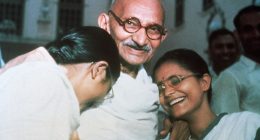
The patient had her scan three days later. When she emerged, the technician told her that her doctor would be in touch.
There was something on the M.R.I., Smith told her. A tumor. She was pretty sure it was not malignant, but to be certain, the patient would need a CT scan. Smith explained that she thought the young woman had something known as an osteoid osteoma — an inflammatory tumor that can be seen in people her age. It hadn’t been what she was looking for, and an M.R.I. was not the best way to diagnose it. The young woman looked up the M.R.I. report on her electronic medical record. What she saw scared her. It was, as Smith said, a small tumor, but the report listed other, scarier possibilities as well. Most prominent on that list: cancer. An infection in the bone was also possible. The benign tumor that Smith suspected wasn’t even mentioned.
The CT scan was mercifully quick, and Smith called right away with the answer: It was an osteoid osteoma. Although these poorly understood tumors will resolve on their own after several years, most people who have them end up having them removed. The tumors are quite painful, and the treatment is simple and safe. Under CT guidance, a tiny catheter is introduced through the skin to the tumor, and a probe blasts the tumor with heat. Because the procedure is painful, it is usually done under general anesthesia.
Smith told me that she had seen three patients who had osteoid osteomas. Each time, she discovered it while looking for something else. The tumor is called the great mimicker because it looks like so many other possibilities that are more common or more dangerous.
The patient chose to defer the procedure until after her semester abroad. Then, just at the start of Hanukkah, she went to the operating room. Once the pain medicine she received at the hospital wore off, her hip hurt as it had never hurt before. Her parents discouraged her from using the opiates the surgeon had prescribed, and she survived on ibuprofen and acetaminophen for her first week at home. By the second week, she was fine. “I was lucky,” she told me. Her parents were doctors. They knew how to get her the specialists and tests she needed. Still, it took two years to figure this out. It must, she said, be so much harder for those without these advantages.
Lisa Sanders, M.D., is a contributing writer for the magazine. Her latest book is “Diagnosis: Solving the Most Baffling Medical Mysteries.” If you have a solved case to share, write her at Lisa.Sandersmdnyt@gmail.com.
Read More: World News | Entertainment News | Celeb News
NYT







